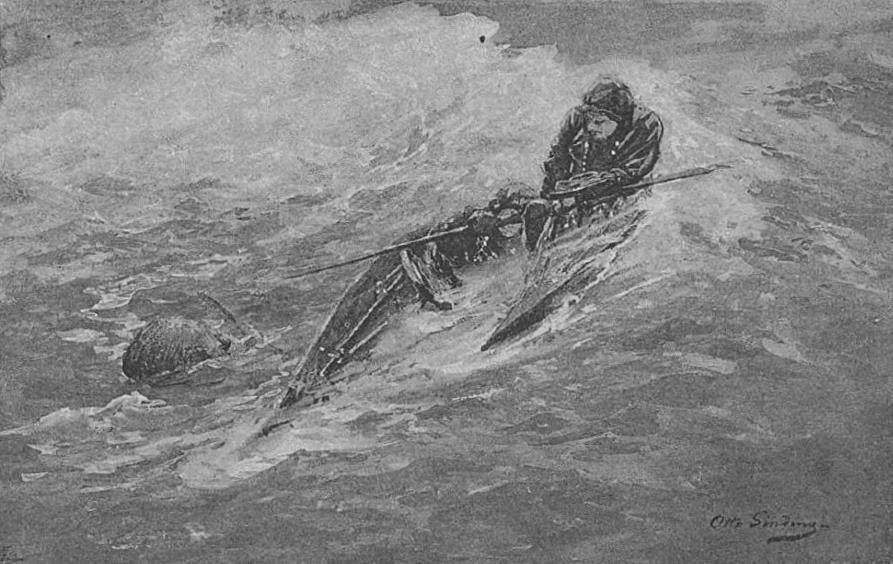Eskimo Rescue on:
[Wikipedia]
[Google]
[Amazon]
 An Eskimo rescue, bow rescue or T-rescue is a
An Eskimo rescue, bow rescue or T-rescue is a
 An Eskimo rescue, bow rescue or T-rescue is a
An Eskimo rescue, bow rescue or T-rescue is a kayaking
Kayaking is the use of a kayak for moving over water. It is distinguished from canoeing by the sitting position of the paddler and the number of blades on the paddle. A kayak is a low-to-the-water, canoe-like boat in which the paddler sits facin ...
technique performed to recover a kayaker from a capsize
Capsizing or keeling over occurs when a boat or ship is rolled on its side or further by wave action, instability or wind force beyond the angle of positive static stability or it is upside down in the water. The act of recovering a vessel fr ...
without them having to leave their boat or perform a self-rescue such as a kayak roll. The advantages of this manoeuvre are that the kayaker does not have to get out of the kayak and the kayak does not then have to be emptied of water. However, it relies on another kayaker being able to assist quickly enough. More advanced kayakers will often prefer to rely on a kayak roll instead.
Technique
After drawing attention to the capsize by banging on the bottom of their boat, the kayaker who capsized waits upside down underwater until another kayak arrives to help. The capsized kayaker finds the other kayak, usually the bow, with their hand and uses this for support while they perform ahip-flick The hip-flick, (sometimes called the hip-snap), is a technique used in kayaking to rotate the boat around its longest axis. It is fundamental to all kayaking techniques that return the boat to upright after a capsize
Capsizing or keeling over o ...
to right their kayak. If the kayaker runs out of breath before managing to complete the eskimo rescue, as sometimes happens, they will exit their kayak by releasing their spray deck
A spraydeck (sprayskirt in N. America, akuilisaq or tuiitsoq in Greenland) is a flexible waterproof cover for a boat (in particular for a kayak or a canoe) with holes for the passengers' waists. Spraydecks are used to prevent water from enterin ...
.
Naming
An eskimo rescue is often used synonymously with ''T rescue'' and ''bow rescue'', these names come from the shape the boats make (a ''T'') and the part of the boat that is presented to the capsized kayaker respectively. However, an eskimo rescue is really the general term for any rescue in which a capsized kayaker is righted with help from another.References
Kayaking techniques {{water-sports-stub